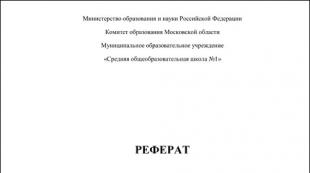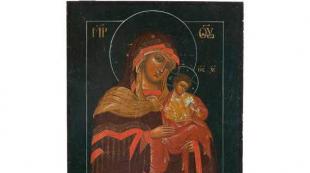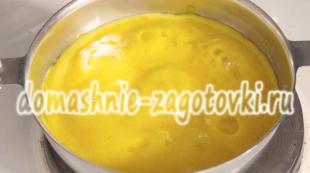The meaning and practice of the Vajrasattva mantra. The hundred-word mantra of Vajrasattva: correct execution by whom, when and how many times is read
A well-known mantra in the East, by practicing which you can cleanse yourself, know yourself, reach a new spiritual level, and, at the same time, be healed and receive some benefits. This is available to each of us.
In Buddhism, the hundred-syllable mantra of Vajrasattva is considered miraculous and special. Since ancient times, it was used by the monks of Tibet when they wanted purification due to the violation of vows. A hundred-syllable mantra is a hundred different forms of manifestation of our energy. It is otherwise called the mantra of the Diamond Mind, for Vajrasattva in Sanskrit means “diamond, indestructible being” or “soul of lightning”, or “a force like the strike of lightning and the power of thunder.”
Vajrasattva is a collective image of 5 heavenly Buddhas, owners of an indestructible state of consciousness, the most important deity in Tantra (traditions of Hinduism and Buddhism using secret practices or initiations). It is the essence of purification, a symbol of purity, white light, wisdom, calmness, fortitude.
The 100-syllable mantra is known and revered in Hinduism and Buddhism, since it is very strong and can effectively completely rid a person of spiritual dirt and heavy karma. Each of us experiences the effects of karma on ourselves. This is an immutable law that does not fail. Karma does not disappear on its own, but it can get worse. We accumulate our pollutions - sins, actions, mistakes, negative emotions - throughout our lives. The hundred-syllable mantra of Vajrasattva can very effectively ease karma, transform consciousness, and cleanse oneself of mental, physical and verbal dirt. Principle: “Consciousness is indestructible.”
Purpose and benefits of mantra
A hundred-syllable mantra can bring into our lives:
- cleansing karma
- untying karmic knots
- deliverance of the soul from sins
- restoration of stream of consciousness
- self-knowledge
- enlightenment and concentration
- calming the soul and mind
- calming down the excitement
- pacification
- relief of suffering
- protection from negative thoughts
- liberation from negative emotions (anger, envy, hatred)
- restoration of morality
- salvation from chronic diseases
The benefits of repeating the 100 syllable mantra of Vajrasattva are spoken of in the tantras:
The reader of One Hundred Syllables is not affected by illnesses, torments, or premature death...
His enemies are crushed to dust
his wishes are fulfilled immediately,
...let there be a son, if he desires a son,
Or wealth, if he so desires,
or land that he had previously lost.
Anyone who strives for longevity
let One Hundred Syllables speak unceasingly...
The reader of One Hundred Syllables is not threatened
...neither various evil spirits, nor demons of oblivion.
Constantly reading those Hundred Syllables,
a stupid fool will gain wisdom...
And the unfortunate is constant luck,
Both melancholy and unsteadiness will disappear.
A hundred syllable will cleanse the worst villain...
The reader will achieve Awakening...
The Tantra of Pure Repentance says that if
...repeat one hundred and eight times in a row, then you can restore all weakened and broken vows and save yourself from falling into the lower worlds
How to practice mantra correctly
A mantra is a combination of sounds, syllables, words in Sanskrit, each of which has a deep sacred meaning; these are sacred Vedic words that require accurate reproduction. It can be compared to a prayer or a spell.
By whom, when and how many times the mantra is read
Each of them has its own technique for proper use. The hundred-syllable mantra does not require transmission from a teacher. It works on its own. Anyone can read it. The 100 syllable mantra can be learned or read, sung or listened to at any time of the day or night.
It is better to practice it in complete solitude and concentration. For the best effect, be completely naked and accompany the reading with prostrations. Repeated repetition of sounds transforms consciousness and helps cleansing. The hundred-syllable mantra of Vajrasattva will not allow negative karma to grow and will purify it when repeated 21 times daily. Complete clarification of karma involves reading it 108 times daily.
Buddhists believe that reading it 1,000,000 times gives enlightenment and the achievement of a new level of spirituality. The hundred-syllable mantra in each syllable carries a person’s request to Vajrasattva. When reading or listening to it, find this deity in the depths of your soul, in your heart. While reading the hundred-syllable, meditation is necessary. One of the most powerful and effective is meditation of the four forces.
Meditation for the Hundred Syllable Mantra

Vajrasattva is the power of support (the presence of 100 peaceful and wrathful Deities embodied in the Buddha), which will help to purify with the Power of the applied antidote, the Power of repentance and the Power of decision.
If you develop these 4 powers in yourself, then after reading the text just once, you will receive complete cleansing of karma. When reading, meditation is necessary with the visualization of Buddha or Vajrasattva above the top of your head. This is exactly what the Power of Support is.
One must visualize the syllable HUNG emitting white light at the heart center of Vajrasattva. It concentrates and flows through Vajrasattva's thumb and flows into the crown of your head. This light, like soap and water, will cleanse your impurities and cure diseases. They exit through your lower chakras and go into the earth where they are neutralized. This is the Power of the applied antidote.
If you recite a mantra without sincere repentance, it does not work. We must deeply regret all our negative actions and deeds, sensing the hidden echoes of past lives in them. Feel the real horror of what you did. This is the cleansing Power of repentance.
When starting the practice of the Vajrasattva mantra, one must firmly decide that any negative act will not be committed even if life is threatened. This is the Power of Decision.
If you start practicing, then you need not only to read it, but also to work a lot on yourself, strive to cleanse your soul, rebuild your life so as not to make new mistakes. Then you are sure to get an amazing positive result that can turn your karma in a new direction.
Mantra Text
Short version:
OM VAJRASATO HUM
Vajrasattva Hundred Syllable Mantra:
OM
BEN DZA / SA TO SA MA YA / MA NU PA LA YA /
BEN DZA SA TO TE NO PA
TI THA DRI DHO ME BHA VA
SU TO KHA YO ME BA WA
SU PO KHA YO ME BHA WA
A NU RAG TO ME BA VA
SAR WA SI DDHI MEM TA I CA
SAR WA KAR MA SU TSA ME
QI TAM SRI YA KU RU HUNG
HA HA HA HA HO/ BHA GA WAN SAR WA TA THA GA TA
BENDZA MA ME MYUN TSA BENJI BHA WA
MA HA SA MA I SA TO AH
Translation by Batarov V.
Vajrasattva, protect my obligations.
Vajrasattva support me.
Please stay by my side always
Be pleased with me
Always be open to me
Be kind to me
Give me the fulfillment of all plans.
Make sure that all my actions are good.
Make sure that my mind is always virtuous.
Enlightened conqueror Vajrasattva,
Do not abandon me in difficult times, for I have obligations.
Additional explanations:
“Om” - symbolizes the Body, Speech and Mind of the Buddha
“Hung” - symbolizes primordial awareness
“Ha Ha Ha Ha Ho” - symbolizes the five types of primordial awareness or wisdom
“A” means that phenomena lack their inherent nature
The Buddhist mantra of Vajrasattva is one of the most effective and popular in Tibet and India. It is called magical and miraculous. The perfectly chosen sound of sacred sounds, grouped into one hundred syllables, has a powerful effect on and produces dramatic changes on the physical plane.
Let's consider the topic: mantra practice - the hundred-syllable mantra of Vajrasattva. How many times do you need to say the text, at what time of day, how many days in a row - all the answers will be in the article.
Vajrasattva in Buddhism and Hinduism
Vajrasattva is the embodiment of purity and purity. This image in Buddhism symbolizes sincerity, sinlessness and freshness. Vajrasattva is depicted on a lotus throne with a lunar disk.
In his right hand he holds a vajra - a symbol of steadfastness and compassion. With his left hand, Vajrasattva holds silver bells - a symbol of spirituality and wisdom.
The word "vajrasattva" is translated as "diamond indestructible being." There are other interpretations of this word - “the soul of lightning”, “a force similar to a strike of thunder and lightning.” Under this name are united five incarnations of Buddhas who have achieved enlightenment, purity, harmony and fortitude.
Effect of the mantra
The hundred-syllable mantra has been known since ancient times; it was used by Buddhist monks to rid the soul of sins, correct karma and move to a new level of perception. The power of the mantra is so great that it can correct the karma of a person’s past incarnations.
The text is written in sacred language and has no literal translation. Through the utterance of sacred sounds, a person turns to the divine essence with a request to cleanse the soul and grant enlightenment.
As a result of practicing the mantra, you can achieve the following results:
- get rid of chronic diseases;
- relieve mental suffering;
- get rid of immoral thoughts;
- get rid of internal blocks - anger, envy, jealousy;
- calm the soul and achieve enlightenment;
- understand your earthly purpose;
- cleanse yourself of induced negative magic;
The mantra has an effect only on those people who sincerely want to get rid of their own negativity, strive to comprehend wisdom and gain enlightenment. Without a sincere pure heart it is impossible to achieve spirituality.
Here is what is written in Tantra about the practice of the 100-syllable mantra:
How to Practice Mantra
The sacred text can be listened to recorded, sung or read. To better enter a meditative state, take a cleansing shower or bath and burn incense - aroma sticks with the scent of sandalwood or lotus. Smells excite the human astral body and tune in to perceive transcendental vibrations.
At the beginning of practice, you can simply listen to the words in the recording, then try to repeat it out loud. During meditation, you need to imagine the image of Vajrasattva or contemplate the image in the picture. In Buddhism, Vajrasattva is a symbol of purification and deliverance.
When you learn the text of the mantra, repeat it along with the recording. In the future, you can practice the mantra yourself, using rosaries with beads - 108 pieces (the one hundred and ninth bead in the rosary is used for separation). According to Buddhist beliefs, one who recites a mantra a million times can achieve enlightenment during his lifetime.
Literary translation of the text:
How many days does the mantra practice - the 100 syllable mantra of Vajrasattva? It should be read 108 times (or 21 times) daily. The more days you devote to practice, the better for you. The time of day for practice does not matter: the main thing is that no one bothers you. Some yogis recommend meditating completely naked. If there is such an opportunity, be sure to take advantage of it.
The Vajrasattva mantra is practiced with visualization - you need to imagine the image of a golden Buddha above you. If visualization does not work, you can look at a statuette or image of a Buddha.
To receive cleansing of sins, you must sincerely repent in your heart - otherwise you will not be able to achieve cleansing. However, your soul must make a conscious decision - not to commit any more sins, to follow the path of wisdom and purity. If you are not ready for such a decision, ask higher powers to give you understanding.
The Vajrasattva mantra is a mantra for purifying karma of enormous power. How does the practitioner feel on a physical level after mediation? The result of practice is:
- feeling of lightness in the body;
- less need for sleep;
- good health; clarity of memory and thinking;
- development of intuition.
The Tantra of Pure Repentance says that one who practices daily meditation becomes a son of the Buddhas during life and a Bodhisattva after death.
Listen to Vajrasattva's mantra in the recording.
(Sanskrit. Vajrasatva - “vajra” - diamond, lightning, “satva” - hero, Tib. Dorje Sempa “Diamond Mind”) =
The purifying, transformative power of all Buddhas in the Vajrayana tradition. In a tantric context, the meaning of his name indicates the indestructible state of enlightened consciousness, since the vajra is a symbol of Buddha nature.
Sometimes Vajrasattva is called the sixth among the five Tathagatas. He belongs to the Buddha family of Vajra (Sansk. "diamond"). In the Diamond Kingdom mandala, Vajrasattva sits to the east of Akshobhya Buddha.
In Padmasambhava's terma "Bardo Todrol" (Tib. Bar-do thos-grol, lit. "Liberation in the bardo through hearing") the Buddha Akshobhya is called Vajrasattva.
Vajrasattva grants vision of the innermost reality reflected, as in a mirror, in all phenomenal or visible objects. He is the personification of Mirror-like Wisdom, or the Ornament of the Dharmakaya. This transcendental wisdom, dwelling beyond the realm of ordinary mind, cognizes samsara and nirvana as a reflection in a mirror.
Vajrasattva, in Tibetan Dorje Sempa, is the form that Buddhas take to purify and rid living beings of suffering, disease and unripe unfortunate circumstances that are bound to occur as a result of their previously committed negative actions. He appears in different forms, peaceful or as Heruka Vajrasatgwa, alone or with his consort. The practice can be more or less difficult. The method of purification with a single Vajrasattva is described below.
At the top of your head (imagine) your Guru in the form of Vajrasattva, white in color, with a vajra scepter in his right hand at the heart and a bell in his left hand at the hip, decorated with the major and minor signs of the Buddha.
Imagining yourself in your normal form, visualize the syllable “PAM” on the top of your head. It turns into a white lotus flower, and on it the flat disk of the moon appears from the syllable “A”.
On the lunar disk stands the syllable “HUM”, which turns into a five-pointed vajra or diamond scepter, marked in the center with the syllable “HUM”. Rays of light are emitted and absorbed by the vajra twice, the first time - bearing offerings to Buddhas and Bodhisattvas, and the second time - eliminating the suffering of all beings. The vajra then turns into a single Vajrasattva as described above. His left leg is over his right hip and his right leg is down. In his heart is a lunar disk, in the center of which stands the white syllable “HUM”.
Vajrasattva has two mantras of one hundred and one of six syllables. They can be located in his figure in different ways - they can be curled in a clockwise or counterclockwise direction, they can rotate or stand still. In this case, only a hundred-syllable mantra is presented, which needs to be repeated only 100,000 times. It is written along the edge of the lunar disk in the heart of Vajrasattva, counterclockwise. The letters are white, base-inward, face-down, and do not rotate.
Having imagined this, say: “Oh, Guru-Vajrasattva, please cleanse me from all obstacles and unripe unfortunate circumstances that are about to happen as a result of the negative deeds I have previously committed.”
In addition to this, use (four) different (counteracting forces) recognitions of previously committed non-virtue.
For this meditation to be most effective, it should be done using the four counteracting forces of recognizing the negative deeds you have previously committed.
- First, you must remember all your mistakes and feel sincere regret,
- secondly, promise that you will try to do everything possible so as not to repeat them.
- Next, you need to rely on the basis or object against which your non-virtue was committed, namely your obligations to Refuge and Bodhichitta. Thus, by taking refuge again and increasing your aspiration for Awakening, you strengthen the foundation of your morality.
- Finally, you focus purification practices such as Vajrasattva's to remove all stains.
If these four opposing forces are incomplete, then whatever cleansing you do will only be a temporary wash. But if you have these four counteracting factors and a sincere conviction that they have the power to cleanse you, then there is no doubt that they will work.
Then imagine white nectar emanating from Vajrasattva's big toe (right) and flowing through the crown of your head and filling your entire body. All obstacles and unripe consequences leave you and their place is completely filled with nectar.
When you recite the hundred-syllable mantra, white rays and purifying nectar emanate from the moon disc, the seed syllable "HUM" and the mantra in the heart of Vajrasattva, completely filling his body, then overflowing it and entering you, as downloaded above. Imagine that obstacles and unripe unfortunate circumstances leave you through the pores and openings of your body in the form of soot and black tar, diseases and ailments come out in the form of blood and mucus, the harmful influences of malevolent spirits - in the form of snakes, scorpions, spiders and various insects.
All this goes into the ground, and the vacated space is filled with white nectar and light. Imagine that the same thing happens to all living beings around you, that each of them has Vajrasattva above their head, or that they are all under one large figure.
Satisfied, your Guru (Vajrasattva) melts into the light (and dissolves into you).
Meditate that your body, speech and mind are inseparably mingled with the body, speech and mind of Vajrasattva, and you are purified of all obstacles and unripe unhappy consequences. This is the second (introductory practice): Vajrasattva and mantra recitation.
Literature
- Androsov V.P. Indo-Tibetan Buddhism: Encyclopedic Dictionary. M., 2011.
By practicing the Vajrasattva mantra, a person can purify himself, know himself, reach a new spiritual level, and also be cured of many ailments. The use of this miraculous text, according to the beliefs of practicing yogis, allows one to achieve a state of enlightenment much faster than other methods.
[Hide]
Vajrasattva in Hinduism and Buddhism
Vajrasattva is the image of Buddha nature and the main deity of tantra (esoteric Indian tradition).
In Hinduism
In Hinduism, Vajrasattva is characterized as follows:
- In the Tibetan Book of the Dead, Vajrasattva is called differently - Buddha Akshobhya, which means “unshakable” and “unchangeable”. Akshobhya transforms the anger of living beings into pure wisdom and teaches them to see things unclouded.
- In Tibet, Vajrasattva is called Dorje Sempa. It means "diamond mind".
- The body of this god in a peaceful incarnation has snow-white skin - this symbolizes purity. The wrathful incarnation of the god is Vishuddha Heruka with blue skin and six arms. In his lower hands are bowls in the shape of a skull - kapals - which symbolize the impermanence of existence, and in his upper hands - weapons.
In Buddhism
In Buddhism, Vajrasattva is a symbol of purification and deliverance. The rituals of this religion also use a vajra, which resembles an ancient scepter. Depictions of Vajrasattva in Buddhism hold the vajra in his right hand.
This item symbolizes:
- awakened consciousness;
- karuna—compassion;
- I'll fall - a skillful method.
Vajrasattva is often depicted with his wife, whom he embraces - both in a peaceful and in an angry guise.
Effect of the mantra
The mantra works like this:
- cures many chronic diseases;
- capable of purifying karma;
- the soul is deprived of suffering;
- an understanding of one’s earthly purpose comes;
- karmic load is cleansed and corrected;
- the practitioner gets rid of internal blocks: anger, envy, jealousy;
- peace of mind comes;
- enlightenment is achieved;
- a person is cleansed of induced negative magic.
How to practice correctly?
You need to practice the mantra like this:
- First, the words of the mantra are listened to in the recording several times.
- Then you need to try to repeat it by ear, maintaining the rhythm and intonation.
- During meditation, you need to imagine the image of Vajrasattva or contemplate the image in the picture.
- It is necessary to repeat the mantra every day, and not from time to time.
- You can sing and listen to prayer at a convenient time of day. At the same time, listening to a mantra works just as well as reciting it.
- It is best to practice alone, in a familiar, comfortable room.
Some experienced yogis insist that it is more effective to chant this mantra naked.
The video shows an example of reading a mantra. Courtesy of Magic Mantra Channel.
Vajrasattva texts with translation
There is a short version of reading this mantra and a long one, also known as the table mantra.
The short mantra goes like this:
OM VAJRASATO HUM
Interpretation of the mantra in Russian:
I take refuge in the Three Jewels. I will liberate all sentient beings and bring them to awakening. Therefore, I perfectly generate the attitude of achieving enlightenment for the benefit of all sentient beings.
Meditation for the hundred-syllable mantra
Features of meditation for the hundred-syllable mantra:
- when reading it, you need to focus on the image of Vajrasattva;
- you need to imagine that this god is hovering above your head, as a white light emanates from his body, which penetrates the reader through the crown;
- one should think about how the purified body glows white.
The long version of the mantra goes like this:
BEN DZA / SA TO SA MA YA / MA NU PA LA YA /
BEN DZA SA TO TE NO PA
TI THA DRI DHO ME BHA VA
SU TO KHA YO ME BA WA
SU PO KHA YO ME BHA WA
A NU RAG TO ME BA VA
SAR WA SI DDHI MEM TA I CA
SAR WA KAR MA SU TSA ME
QI TAM SRI YA KU RU HUNG
HA HA HA HA HO/ BHA GA WAN SAR WA TA THA GA TA
BENDZA MA ME MYUN TSA BENJI BHA WA
MA HA SA MA I SA TO AH
Video
The video shows the practice of the Vajrasattva Mantra. Taken by user Inna Romanenko.









